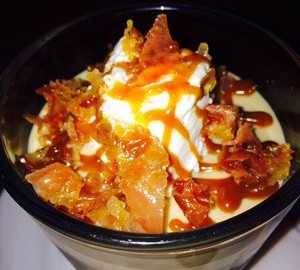Pasadena Architecture
Pasadena is filled with beautiful structures. They are designed from many amazing architects that use Pasadena to create their masterpieces. The cultural and historical influences of Pasadena architecture have made Pasadena such an amazing neighborhood to call home.
Architectural Styles
There are many styles of Pasadena architecture that can be found including:
• Rancho: This style is probably the most well known style in Southern California. This style became popular between 1780 and 1850. It is characterized with adobe walls, a V or T shaped floor plans, a courtyard and a veranda that protects the building from the sun. This style has been adapted in subsequent time periods but remains a staple throughout California.
• Beaux-Arts Classicism: Popular from 1880 to the 1920s, the Beaux-Arts Classicism style originated from Europe. There were only two architecture schools in 1880 in the United States. Many architects chose to study abroad in Europe. Architects use sculptural decorations, modern lines, a flat roof, arched windows and doors, and a hierarchy of spaces.
• Spanish Revival: Following just behind the Mission Revival style, the Spanish Revival spanned from 1915-1930. It is characterized with limited ornamentation, deep arches, whitewashed walls and recessed voids. Shadows were developed in order to define the character of Spanish Revival.
• Victorian: Millionaire’s Row in Pasadena personifies the Victorian style. It represented wealth and extravagance and those who wanted to flaunt their wealth invested in the Victorian style. This architecture was brought to Pasadena from the East in order to show off one’s status. Victorian style homes feature an abundant of detail of textures, colors and patterns. Traditional characteristics of a steeply pitched rood, a dominant front-facing gable, and pattern shingles come together to form an asymmetrical façade with a partial or full-width front porch.
• Mission Revival: The Mission Revival style was inspired from early Missions. It found its way into society between the years of 1900 to 1910. It is commonly thought of as a classic California heritage due to the strong Spanish influence. They are characterized by tile roofing, solar shielding of walls and interiors, an outdoor shaded area and courtyard. This style rings true to the original Mission style, but is updated with earthquake codes and contemporary construction materials.
• Craftsman: During 1895-1915, the Craftsman style took off. The Arts and Crafts Movement began in 1888 in England and was spread to California by Gustav Stickney in his magazine The Craftsman. Efficient floor plans, natural building materials, horizontal shapes and built-in cabinets and shelves characterize this style. It is a very common style of architecture found throughout the Pasadena area to this day.
Prominent Architects of Pasadena Architecture
Architecture has always been a prominent part of Pasadena. There are many measures taken to preserve the historical culture of Pasadena architecture. Some of the most talented and famous architects include:
• Buff and Hensman.
• Wallace Neff.
• Reginald Johnson.
• Greene and Greene.
• Sylvanus Marston.
• Myron Hunt.
They are best known for designing houses and other buildings in Pasadena. Some of these famous buildings and structures include:
• The Rose Bowl.
• Huntington Hotel.
• Colorado Street Bridge.
• Pasadena City Hall.
• Gamble House.
For more interesting facts about the Silver Lake and South Pasadena area, and to see some of our listings, like our Facebook Page.








